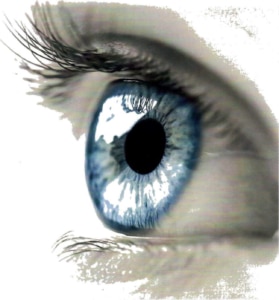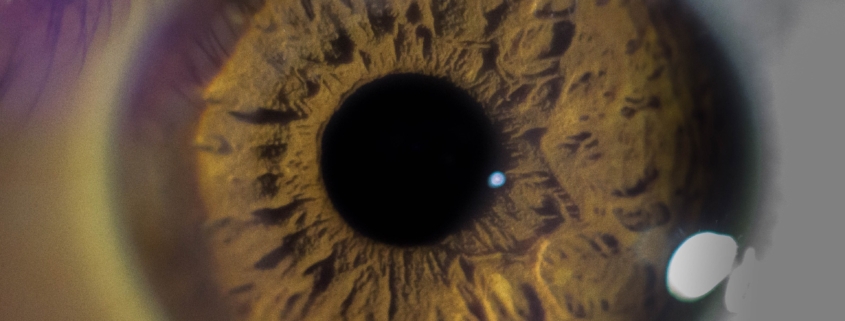Macular Degeneration: What You Need To Know
Each February is Macular Degeneration Awareness Month, a designation that’s deeply important to us here at Kirman Eye. To honor that distinction, this month’s blog seeks to educate visitors on the facts about that condition, its causes, stages, and various treatments. Read on to learn more about what it is, and how you can combat it.
What is Macular Degeneration?
Age-Related Macular Degeneration (AMD) is a progressive eye disease that affects the macula (the central part of the retina responsible for processing visual images). The macula is to the eye as film or a digital processor is to a camera. In cameras, damage to the film or processor results in blurry pictures. In the human eye, a macula affected by AMD means the loss of central vision, which is important for daily tasks like walking, driving, reading, watching TV, recognizing family members, and eye-hand coordination (such as putting a key in a door). AMD is the leading cause of permanent vision loss to patients over the age of 65. It is almost 4x as prevalent as glaucoma.
Important Risk Factors

Research reveals that there are a number of pertinent factors that increase a person’s chance of contracting AMD. These include:
- Age 55 or older
- Family History of AMD
- Heart Disease, High Blood Pressure, or High Cholesterol
- Caucasian
- Female
- Smoking
- Overweight or high BMI
Types of AMD
There are two types of AMD: Dry and Wet. The most common version is the Dry form, which progresses slower than the other type and is commonly treated with vitamin therapy. Wet AMD causes a faster decline in vision and is treated with targeted injections. Dry AMD can digress into Wet AMD quite rapidly, and if left untreated, it can result in legal blindness.
AMD of both types can be easily treated, to slow down or halt vision loss. But treatment isn’t as effective in reversing any damage that has already occurred. That’s why early detection and treatment are important.
What Are the Stages of AMD?
Subclinical AMD
Subclinical AMD lasts for about three years and often goes undetected by conventional eye exams. The first symptom is often a sudden reduction in night vision. If you start having trouble seeing at night or in low-light conditions, contact your eye care professional immediately. The sooner AMD is diagnosed, the more options are available to slow it down and halt it. If you start having trouble seeing in dim light, ask your eye doctor for a Dark Adaptation Test to check for potential AMD.
AMO increases the time it takes for your eyes to adjust to darkness. Measuring dark adaptation can allow your eye care professional to detect AMO as soon as 3 years before any other visible signs of the condition can be seen in your macula. Early diagnosis of AMO is vital for successful treatment.
Early AMD
Early AMD is the stage where visible changes are detectable in your retina, and can be seen by your eye doctor. Tiny, yellow deposits of cholesterol (drusen) start to collect around the macula, affecting your eyesight. Poor night vision will grow even worse during this stage.
Intermediate AMD
Intermediate AMD includes significant changes to the retina, as larger and more numerous areas of drusen and pigment disruption develop, and retinal atrophy occurs beyond the macular area. Intermediate AMD can distort your central vision, causing straight lines and angles to appear fluid or wavy. Night vision will be heavily impaired by this stage.
Advanced AMD
Advanced AMD includes all symptoms of the earlier stages, plus atrophy within the macular area (Dry AMD) often accompanied by choroidal neovascularization (new blood vessel growth) in the macular area. This causes significant central vision loss (Wet AMD), and extreme difficulty reading anything smaller than very large letters on an eye chart or a written page. In advanced-stage AMD, special low-vision optical devices are needed to aid the improvement of distance and near vision.
There is no surgical cure for advanced-stage AMD. Wet AMD can be treated with injections, but typically only to halt the damage and stabilize vision loss.
Lifestyle Modifications to treat AMD
There are many lifestyle changes that you can make that greatly reduce your risk of AMD progression.
Stop Smoking
If you smoke, you have a 2-5 times greater risk of vision loss from AMD than a non-smoker. Quitting smoking should be the most important recommendation for all AMD patients.
Keep Moving
Maintain a healthy weight and engage in regular exercise. Monitor blood sugar, blood pressure, and cholesterol level, and follow your primary care doctor’s recommendations to keep those levels within a normal range.
Wear Protective Eyewear
Choose high-quality glasses and sunglasses that filter ultraviolet and blue light.
Eat an Eye-Healthy Diet
Limit your consumption of red meat, and choose green leafy vegetables. Kale and spinach are among the best vegetables for AMD patients. Other helpful foods are blueberries, cherries, and even red wine (i.e., food high in antioxidants). The Mediterranean diet is great for AMD.
Vitamins
When a patient has test results that indicate abnormal macular health or function, and/or has other risk factors for developing AMO, doctors may prescribe a vitamin supplement. These eye vitamin prescriptions are given in conjunction with the latest advice regarding diet, exercise, and other lifestyle modifications for maintaining your macular health. On average, patients that take these vitamin supplements have much better outcomes than those who don’t.
Who Should be Tested
Macular Degeneration is age-related, so all patients 55 and over should be screened for AMO. Patients over 40 years of age who report difficulty driving at night, or patients with any of the risk factors listed above, should also be tested. Testing is easy and can often be done alongside your regular eye exam.
There are many excellent testing options in use at Kirman Eye. We are happy to explain the process to all of our patients.
A Word About Treatment Options:
Our doctors prescribe treatments based on the latest research on AMD. Unfortunately, your AMD may still progress even if you follow our recommendations, though the risk of vision loss is greatly reduced if you adhere to our personalized treatment plans, which can slow early-stage AMD or even halt its progression. Outcomes may vary depending upon factors beyond our control, but we are confident in our ability to diagnose, treat, and improve the prognosis of any patient who comes to us with AMD. Talk to us if you have questions.
At Kirman Eye, we recommend and exclusively offer supplements by EyePromise. We invite you to check out their website at www.eyepromise.com for more information.
Conclusion
AMD is a serious threat to your vision, but early detection and treatment can help preserve your vision for a lifetime. We can provide the best technology, the latest scientific information, and the highest quality treatment available. We are always happy to answer your questions and will work with you to design a plan that is effective at helping you manage your developing situation, to provide the best possible results.
Your partners at Kirman Eye are passionately dedicated to providing our patients with the best and most effective eye-care options available when anticipating all of your optical needs.
Contact us to work with you today!








An impressive share! I’ve just forwarded this onto a colleague
who was conducting a little homework on this. And he in fact bought me lunch simply because I stumbled upon it for him…
lol. So let me reword this…. Thanks for the meal!! But
yeah, thanks for spending some time to talk about this issue here on your web page.
Thank you for establishing such educational plus delightful site. I am excited to details when this occasion arises on its own! Thank you yet again for making the website accessible for planet!
Manuscript is a collective name for texts
Hey people!!!!!
Good mood and good luck to everyone!!!!!